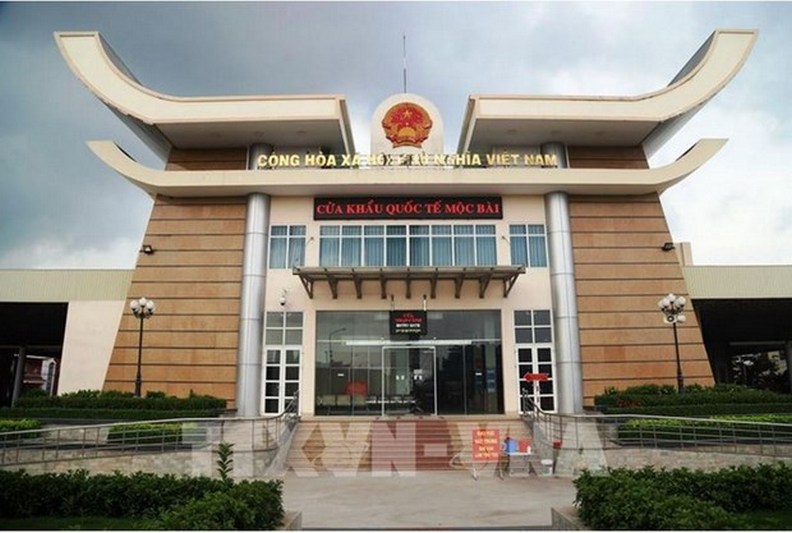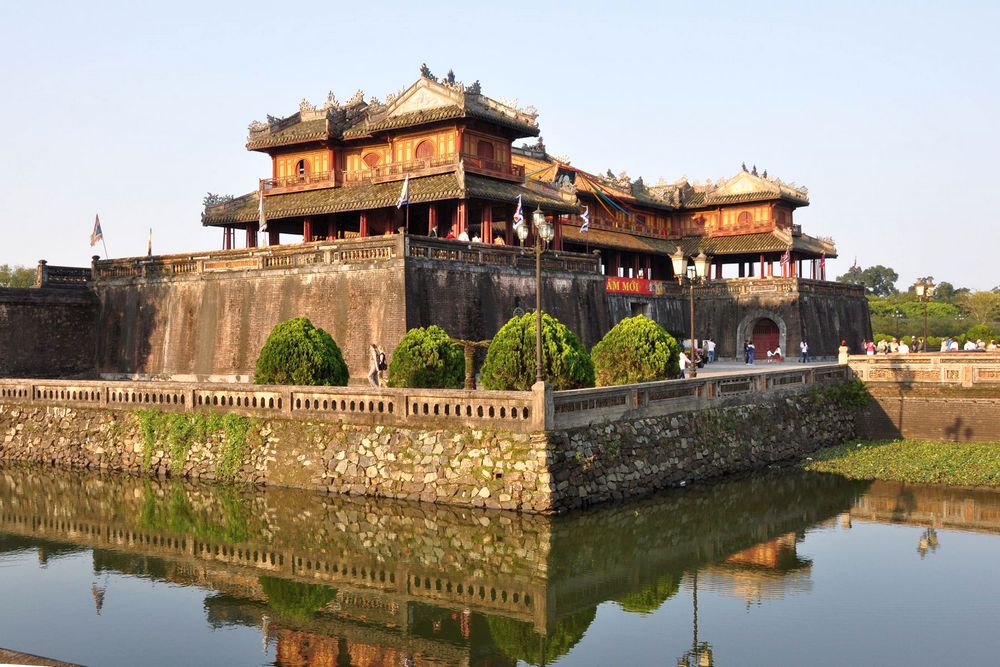Cambodia – Vietnam Border Crossings Essential Information
Are you planning a trip to Southeast Asia and want to explore both Cambodia and Vietnam? Then you will likely need to cross the border between these two countries. The good news is that there are several border crossings available for travelers, making it easy to move between the two nations. However, it’s important to have all the necessary information before embarking on your journey. In this blog post, we will cover everything you need to know about crossing the border between Cambodia and Vietnam.
Which Border Crossings Are There?
There are currently seven official border crossings between Cambodia and Vietnam. These include:
- Prek Chak (Cambodia) – Ha Tien (Vietnam)
- Phnom Den (Cambodia) – Tinh Bien (An Giang, Vietnam)
- Bavet (Cambodia) – Moc Bai (Tay Ninh, Vietnam)
- Trapeing Phlong (Cambodia) – Xa Mat (Tay Ninh, Vietnam)
- Trapeang Sre (Cambodia) – Hoa Lu (Binh Phuoc, Vietnam)
- O Raing (Cambodia) – Bu Prang (Dak Nong, Vietnam)
- Oyadav (Cambodia) – Le Thanh (Gia Lai, Vietnam)
Each of these border crossings has its own unique characteristics and may be more suitable for certain types of travelers. For example, some crossings are more popular with backpackers while others are preferred by those traveling with a tour group. It’s important to research each crossing and decide which one best fits your travel plans.
Bavet (Cambodia) – Moc Bai (Vietnam)
This is the most popular border crossing between Cambodia and Vietnam, located in the southeastern part of Cambodia. It connects the Cambodian city of Svay Rieng with the Vietnamese town of Moc Bai. This crossing is often used by travelers heading to or from Ho Chi Minh City, as it is the closest to the city. It is also the busiest crossing and can get crowded during peak travel times.
Kaam Samnor (Cambodia) – Ving Xuong (Vietnam)
Located in the southern part of Cambodia, this border crossing connects the Cambodian town of Kaam Samnor with the Vietnamese town of Ving Xuong. This crossing is often used by travelers heading to or from Chau Doc, a popular destination for river tours in Vietnam. It is also a popular choice for those traveling between Phnom Penh and Ho Chi Minh City.
Visa Requirements
Before crossing the border between Cambodia and Vietnam, it’s important to have all the necessary visas. Both countries require visitors to have a valid passport and visa before entering. However, there are different requirements depending on your nationality.
For Cambodian Citizens
Cambodian citizens do not need a visa to enter Vietnam for stays of up to 30 days. They will need to present their passport and fill out an entry and exit form upon arrival at the border.
For Vietnamese Citizens
Vietnamese citizens do not need a visa to enter Cambodia for stays of up to 30 days. They will need to present their passport and fill out an entry and exit form upon arrival at the border.
For Other Nationalities
For citizens of other countries, a visa is required to enter both Cambodia and Vietnam. The easiest way to obtain a visa is to apply for an e-visa online before your trip. E-visas are available for both Cambodia and Vietnam and can be obtained through their respective government websites. You can also apply for a visa on arrival at the border, but this can be a time-consuming process and may result in longer wait times.
It’s important to note that some nationalities may be required to obtain a visa in advance from a Cambodian or Vietnamese embassy. It’s best to check with the embassy of your home country before traveling to ensure you have all the necessary documents.
Transportation Options
There are several transportation options available for crossing the border between Cambodia and Vietnam. The most common methods include buses, taxis, and private cars.
Buses
Buses are the most popular option for crossing the border between Cambodia and Vietnam. There are many bus companies that offer routes between major cities in both countries, making it easy to travel between them. Most buses will stop at the border for immigration procedures, and then continue on to their final destination. It’s important to research different bus companies and choose one with good reviews and a reliable schedule.
Taxis
Taxis are another option for crossing the border, but they can be more expensive than buses. Taxis are a good choice for those who want a more comfortable and convenient journey. However, it’s important to negotiate the price beforehand to avoid being overcharged.
Private Cars
For those who prefer a more personalized experience, hiring a private car is an option. This allows you to have more control over your journey and make stops along the way. However, this option can be quite expensive and may not be suitable for budget travelers.
How Do You Cross the Border?
The process of crossing the border between Cambodia and Vietnam is relatively straightforward. Here is a step-by-step guide to help you navigate the process:
- Arrive at the border crossing of your choice and locate the immigration office.
- Present your passport and visa (if required) to the immigration officer.
- Fill out an entry and exit form, which is usually provided at the border.
- Pay any applicable fees, such as a visa fee or border crossing fee.
- Once your documents are processed, you will receive an entry stamp in your passport.
- Proceed to the other side of the border and go through the same process with the immigration office on the other side.
- Once you have completed immigration procedures, you are officially in the new country!
It’s important to note that the process may vary slightly depending on which border crossing you choose. Some crossings may require additional steps or fees, so it’s best to research beforehand to avoid any surprises.
Popular Border Crossings between Cambodia and Vietnam
As mentioned earlier, there are seven official border crossings between Cambodia and Vietnam. However, some of these crossings are more popular than others. Here are three of the most popular border crossings between the two countries:
Bavet (Cambodia) – Moc Bai (Vietnam)
This is the most popular border crossing between Cambodia and Vietnam, as it connects Ho Chi Minh City with Phnom Penh. It is also the busiest crossing, with many buses and taxis passing through each day. This crossing is a good choice for those traveling between the two major cities, but it can get crowded during peak travel times.
Kaam Samnor (Cambodia) – Ving Xuong (Vietnam)
This border crossing is popular among travelers heading to or from Chau Doc, a popular destination for river tours in Vietnam. It is also a good option for those traveling between Phnom Penh and Ho Chi Minh City. This crossing is less busy compared to Bavet-Moc Bai, making it a good choice for those who want a more relaxed border crossing experience.
Trapeang Sre (Cambodia) – Ha Tien (Vietnam)
This border crossing connects the Cambodian town of Trapeang Sre with the Vietnamese town of Ha Tien. It is a popular choice for backpackers and budget travelers, as it is located near several budget accommodations on both sides of the border. This crossing is also less busy compared to Bavet-Moc Bai, making it a good alternative for those who want to avoid crowds.
Safety Tips
While crossing the border between Cambodia and Vietnam is generally a safe and straightforward process, it’s always important to take precautions while traveling. Here are some safety tips to keep in mind:
- Keep your valuables with you at all times, especially during the immigration process.
- Be aware of potential scams or overcharging by taxi drivers or border officials.
- Make sure to have all necessary documents and visas before arriving at the border.
- Avoid carrying large amounts of cash with you.
- Research the border crossing you plan to use beforehand to avoid any surprises.
Future Developments in Cambodia – Vietnam Border Crossings
As tourism continues to grow in both Cambodia and Vietnam, there are plans to improve and expand the current border crossings. This includes the construction of new bridges and roads to make travel between the two countries more convenient and efficient. There are also talks of introducing a single-entry visa for both countries, which would make it easier for travelers to explore both nations without having to obtain separate visas.
Conclusion
Crossing the border between Cambodia and Vietnam is a common journey for many travelers in Southeast Asia. With multiple border crossings available and various transportation options, it’s easy to move between these two countries. However, it’s important to have all the necessary information before embarking on your journey. By following the tips and guidelines outlined in this blog post, you can ensure a smooth and hassle-free border crossing experience. So pack your bags, get your visas in order, and get ready to explore the beautiful countries of Cambodia and Vietnam!





